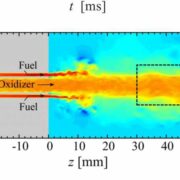The world’s first room-temperature superconductor invented

For the primary time, engineers and physicists from the University of Rochester have synthesized new superconducting material superconductor at room temperature . They also developed a process which will help ‘break down barriers and open the door to several potential applications.’
This superconducting material seems to conduct electricity with none resistance at temperatures of about 15 °C. That’s a replacement record for superconductivity, a phenomenon usually related to very cold temperatures.
Ranga Dias, an professor of engineering and physics and astronomy, said, “Developing materials that are superconducting—without electric resistance and expulsion of a magnetic flux at room temperature—is the “holy grail” of condensed matter physics. looked for quite a century, such materials can change the planet as we all know it.”
In establishing the new precedent, scientists combined hydrogen with carbon and sulfur to photochemically synthesize simple-organic derived carbonaceous sulfur hydride during a diamond anvil cell, an examination gadget wont to inspect minuscule measures of materials under extraordinarily high .
The carbonaceous sulfur hydride exhibited superconductivity of superconductor at room temperature at around 58 degrees Fahrenheit and a weight of around 39 million pounds for every sq in (psi).
Dias said, “Because of the bounds of coldness , materials with such extraordinary properties haven’t quite transformed the planet within the way that a lot of may need imagined. However, our discovery will break down these barriers and open the door to several potential applications.”
According to scientists, the applications for this new superconducting material includes:
- Power grids transmit electricity without the loss of up to 200 million megawatt-hours (MWh) of the energy that now occurs thanks to resistance within the wires.
- A new thanks to propel levitated trains and other sorts of transportation.
- Medical imaging and scanning techniques, like MRI and magnetocardiography.
- Faster, more efficient electronics for digital logic and storage device technology.
Dias says, “The next challenge is finding ways to make the room-temperature superconducting materials at lower pressures, in order that they are going to be economical to supply in greater volume. as compared to the many pounds of pressure created in diamond anvil cells, the air pressure of Earth stumped level is about 15 psi.”

























